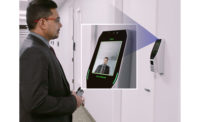LEDinside, a division of TrendForce, has recently published its 2017 IR LED/IR Laser and Optical Sensor Market Report. In the report, LEDinside states that that the global market scale of IR LED and IR laser components used in iris and facial recognition solutions will grow from $145 million in 2017 to $827 million in 2025. The CAGR (compound annual growth rate) in the forecast period is estimated at 24 percent.
“The incorporation of features such as iris recognition and 3D Sensing in smartphones provides a lucrative opportunity for suppliers of IR LED, IR laser and optical sensors,” said Joanne Wu, assistant research manager of LEDinside.
Currently, the smartphone and the automotive markets are the two major application markets for IR LED, which has also appeared in a wide range of solutions related to areas such as security surveillance, iris/facial recognition, photoplethymography, time of flight 3D scanning, structured light 3D scanning and advanced driver assistance systems (ADAS). As handheld devices like smartphones turn into instruments for transaction payments and identity verification, the issue of user security is increasingly becoming important. Likewise, the technology standards behind the biometric recognition features on these devices are getting more stringent as well.
Wu added: “Iris recognition has the advantage of offering a higher level of security. Each iris pattern has around 2,000 data points, whereas a fingerprint has around 100. Therefore, the former can provide a much more accurate user verification outcome than the latter.”
The iris recognition scanner in Samsung Galaxy S8, for example, uses a near-infrared (NIR) LED camera, a CCD image sensor and a biometric solution. The IR LEDs used in the camera are in the wavelength range of 700~900nm. To use the iris scanner, simply look at the smartphone screen and let the NIR LED camera take a picture of the iris that has been previously recorded into the biometric database. Presently, companies that supply IR LEDs for the iris recognition application include OSRAM Opto, Epistar, Epileds, High Power Lighting, Brightek Optoelectronics, Lite-On Technology, Vishay and Epitex.
At the same time, IR laser is gaining market traction and may start to supplant IR LED in some applications, particularly within the area of handheld devices. IR laser is more accurate in many tasks such as proximity sensing, auto focus, hand gesture recognition and noise cancelling. Furthermore, the laser beam can pass through openings of small diameters due to its spatial coherence and focus. This advantage gives IR laser an opportunity to replace IR LED in certain market applications.
“IR laser has become a critical part of many advances in 3D imaging,” said Wu. “3D sensing cameras now use solutions based on time-of-flight 3D scanning and structured light projection. These solutions provide more accurate depth measurement and 3D mapping than methods derived from the traditional 2D imaging technologies.”
Major suppliers of IR laser components include LUMENTUM, FINISAR, HLJ Technology and OSRAM Opto. Furthermore, these IR laser components are integrated with sensor modules from IC companies such as AMS-TAOS and STMicroelectronics to become innovative features for handheld devices. OSRAM Opto currently is in the process of expanding its production capacity for IR laser components for automotive and smartphone applications. Major technology brand Apple is actively acquiring companies and patents related to structured light. Hence, depth measurement and 3D imaging technologies such as structured light and time of flight will find more applications in the near future.
Read more at press.trendforce.com/node/view/2765.html#8MsJL8rXjZys8WUJ.99






